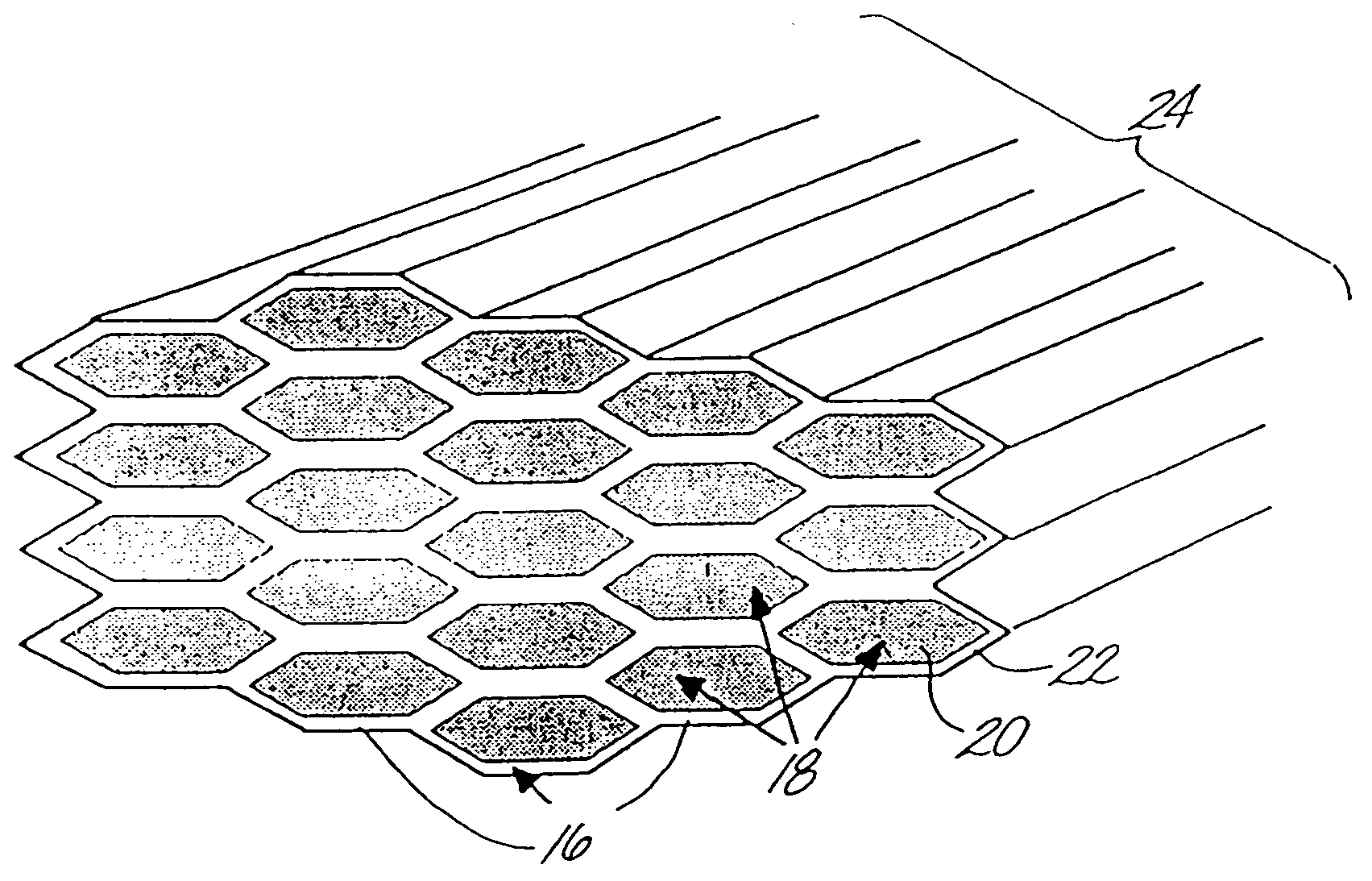Composite constructions with oriented microstructure
a technology of oriented microstructure and composite construction, which is applied in the direction of magnetic bodies, soldering devices, manufacturing tools, etc., can solve the problems of gross brittle failure during use and limited application of cemented tungsten carbide, and achieve the effect of improving the properties of fracture toughness
- Summary
- Abstract
- Description
- Claims
- Application Information
AI Technical Summary
Benefits of technology
Problems solved by technology
Method used
Image
Examples
example no.1
EXAMPLE NO. 1
Fiber Composite Construction (WC—Co Core)
[0049] A fiber composite construction included a hard phase material core formed from WC—Co that was made from WC powder and Co powder, having an average grain size in the range of from about one to six micrometers. The WC—Co contained greater than about six percent by weight Co, based on the total weight of the WC—Co. The binder phase fiber shell was formed from Co, but alternatively could be formed from any of the above-identified metals or metal alloys. Each fiber had a diameter in the range of from 30 to 300 micrometers after consolidation.
example no.2
EXAMPLE NO. 2
Fiber Composite Construction (PCD Core)
[0050] A fiber composite construction included a core formed from PCD according to techniques described in U.S. Pat. Nos. 4,604,106; 4,694,918; 5,441,817; and 5,271,749. Diamond powder was used having an average grain size in the range of from about 4 to 100 micrometers, and was mixed with wax according to the referenced process, and was sintered to form the PCD. The binder phase fiber shell was formed from 411 carbide (i.e., WC comprising 11 percent by weight cobalt and having a WC grain size of approximately four micrometers). Alternatively, the fiber shell could be formed from any of the above-identified metals, metal alloys, and cermets. Each fiber had a diameter in the range of from 30 to 300 micrometers after consolidation.
example no.3
EXAMPLE NO. 3
Fiber Composite Construction (PCBN Core)
[0051] A fiber composite construction included a core formed from PCBN and WC—Co. The WC—Co was made from WC powder and Co powder having an average grain size in the range of from about one to six micrometers, and the PCBN was in the form of cBN powder having an average grain size in the range of from about 40 to 100 micrometers. The WC—Co contained greater than about six percent by weight Co, based on the total weight of the WC—Co. The core comprised in the range of from about 50 to 95 percent by volume PCBN based on the total volume of the core. Alternatively, the core can be formed from PCBN and TiC, or cBN and TiN+Al, or cBN and TiN+CO2Al9, where the core comprises in the range of from about two to ten percent by weight Al or CO2Al9 based on the total weight of the core.
[0052] The binder phase fiber shell was formed from WC—Co, made in the same manner described above for the core. Alternatively, the fiber shell could be form...
PUM
| Property | Measurement | Unit |
|---|---|---|
| particle size | aaaaa | aaaaa |
| thickness | aaaaa | aaaaa |
| thickness | aaaaa | aaaaa |
Abstract
Description
Claims
Application Information
 Login to View More
Login to View More - R&D
- Intellectual Property
- Life Sciences
- Materials
- Tech Scout
- Unparalleled Data Quality
- Higher Quality Content
- 60% Fewer Hallucinations
Browse by: Latest US Patents, China's latest patents, Technical Efficacy Thesaurus, Application Domain, Technology Topic, Popular Technical Reports.
© 2025 PatSnap. All rights reserved.Legal|Privacy policy|Modern Slavery Act Transparency Statement|Sitemap|About US| Contact US: help@patsnap.com



